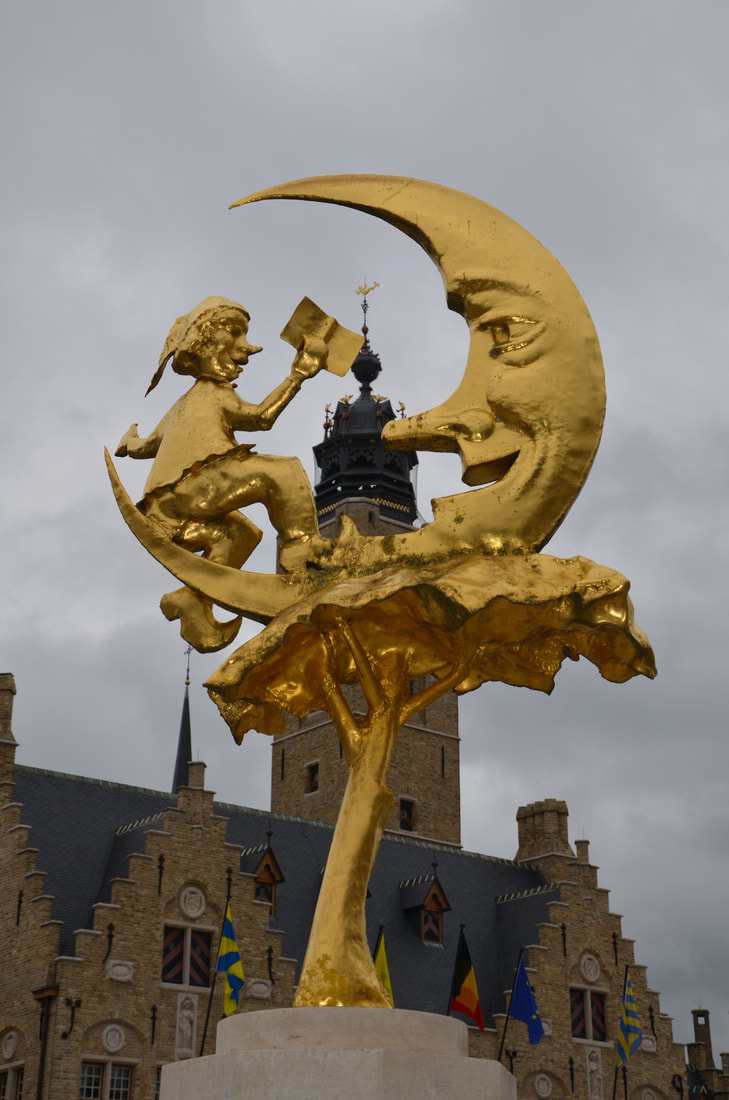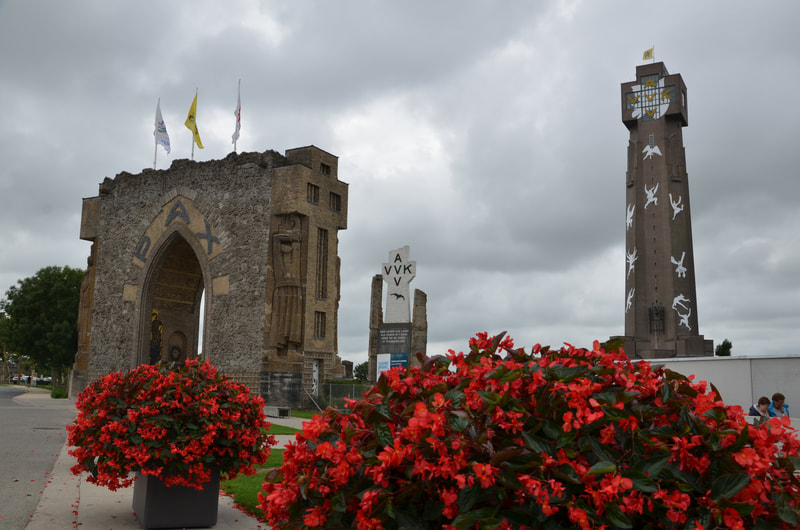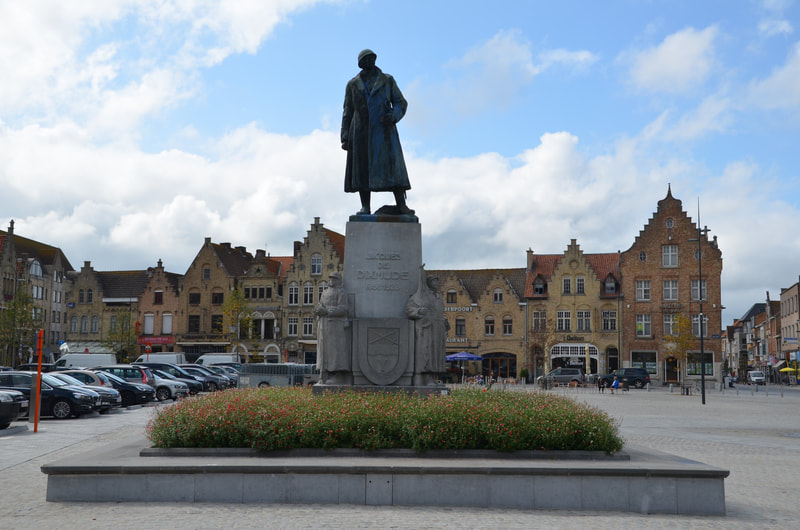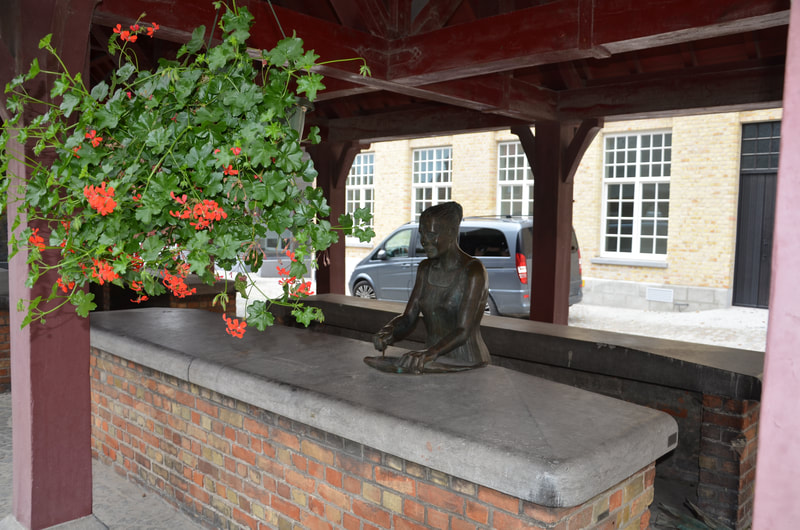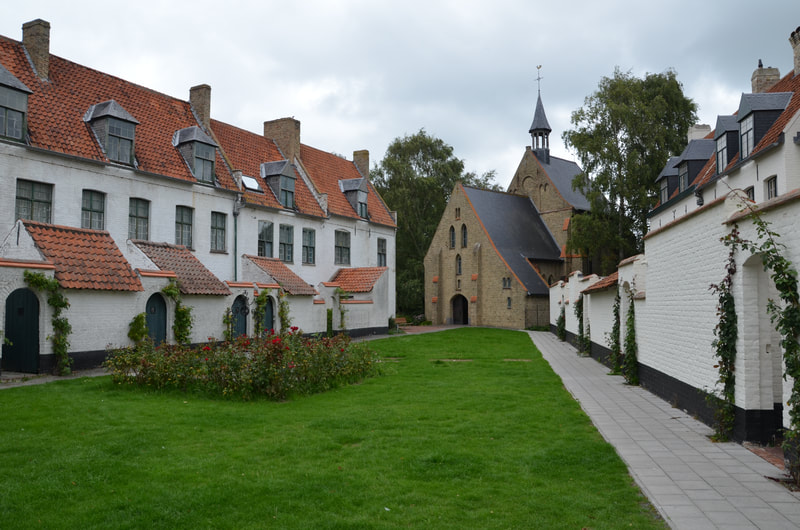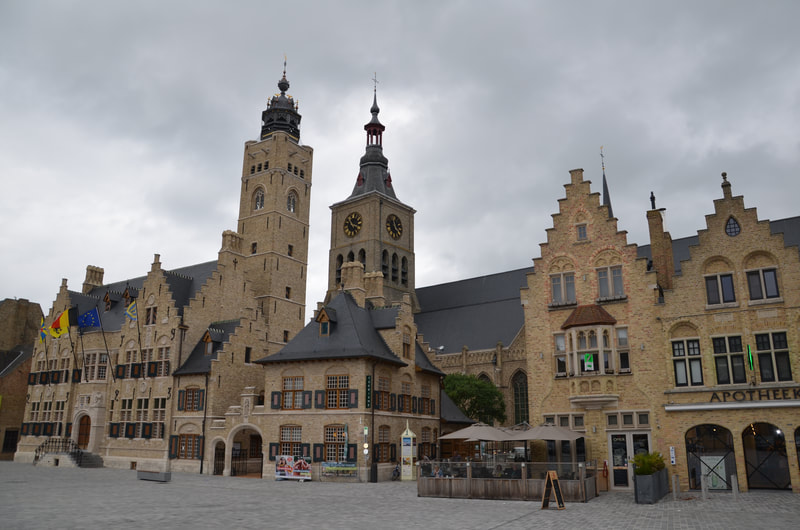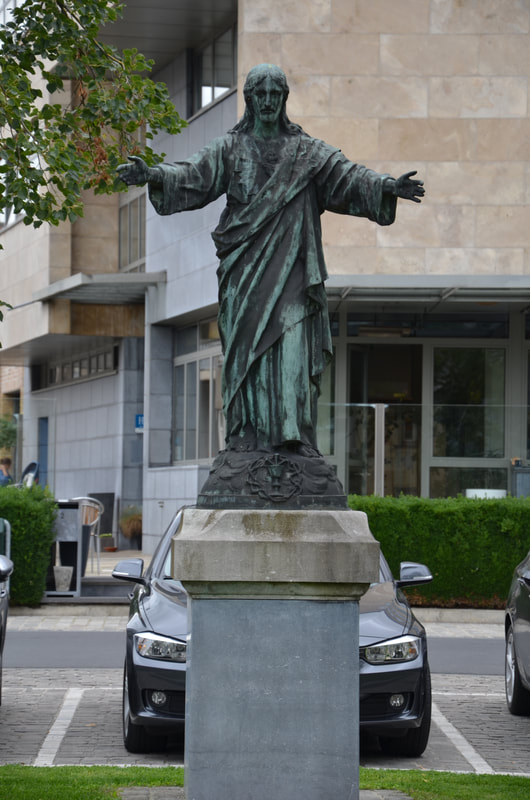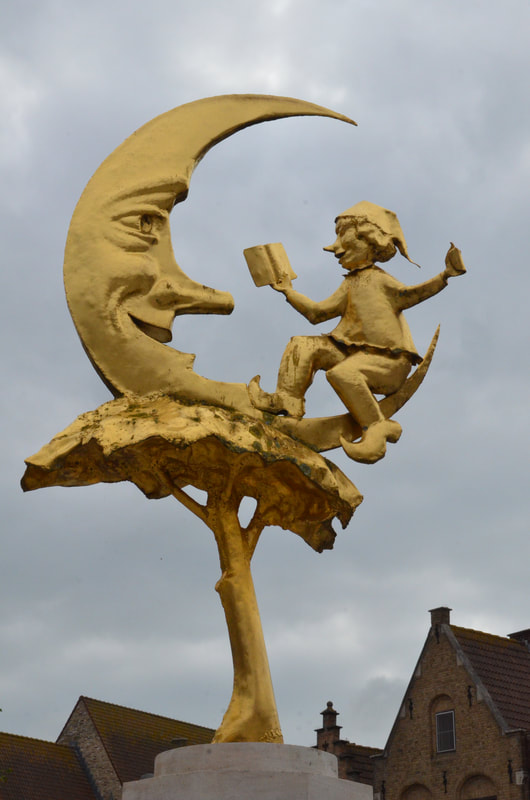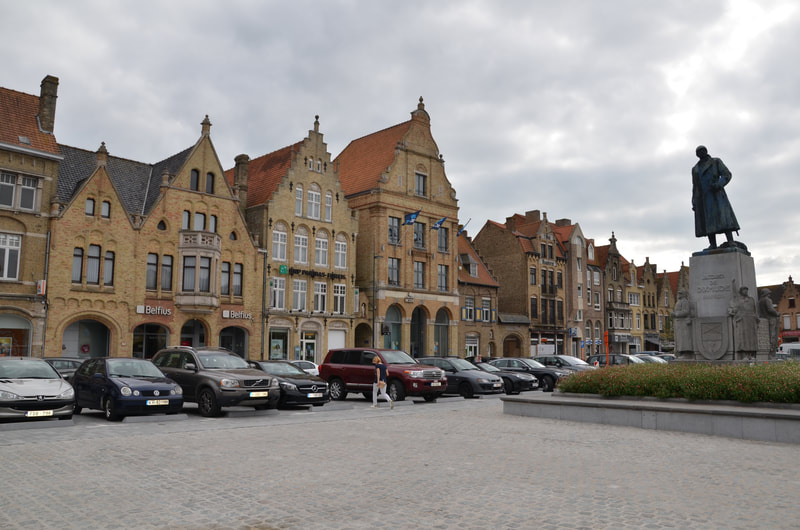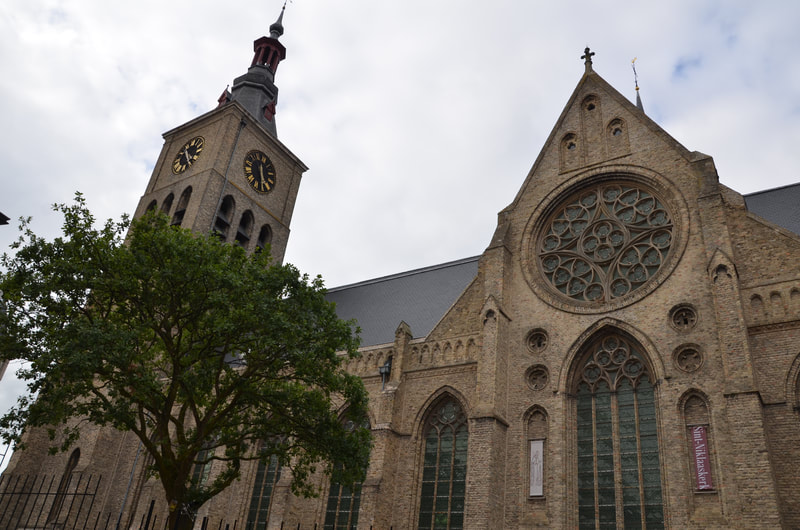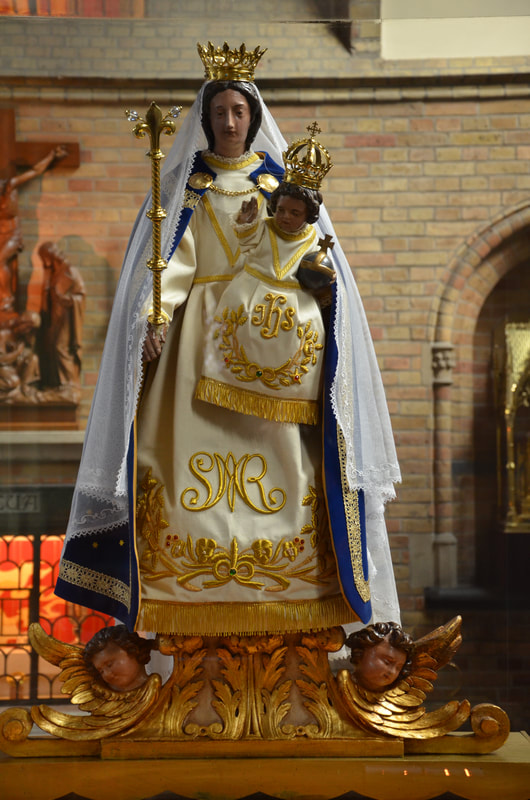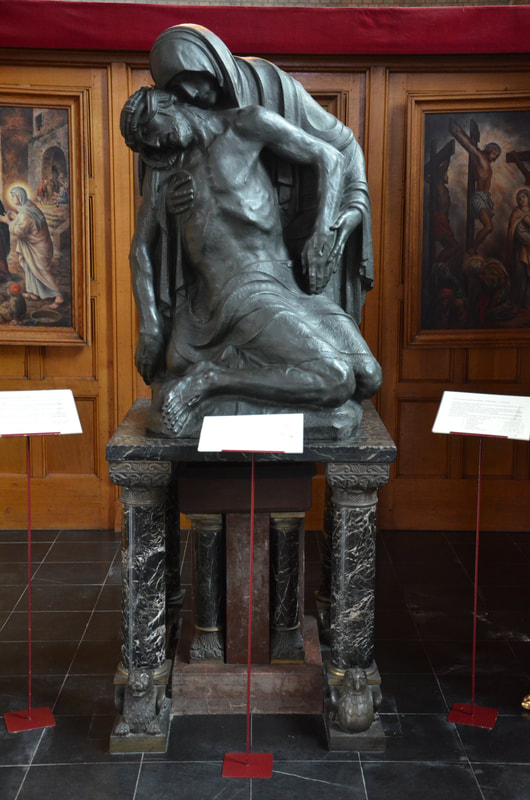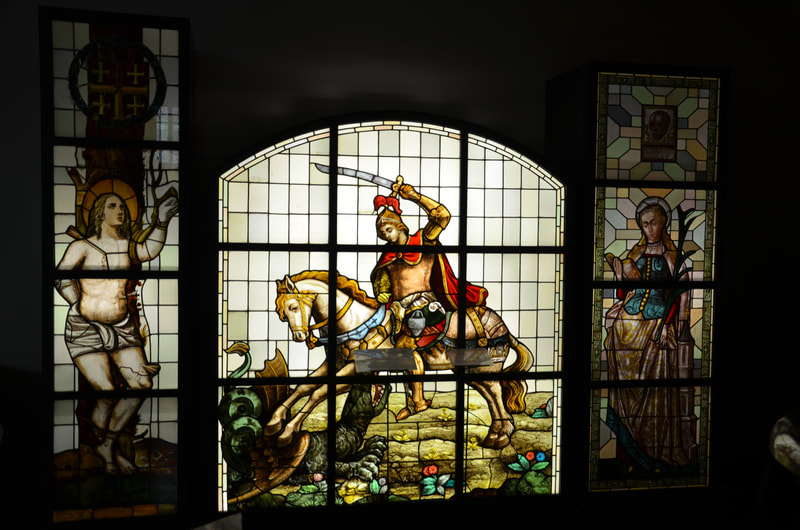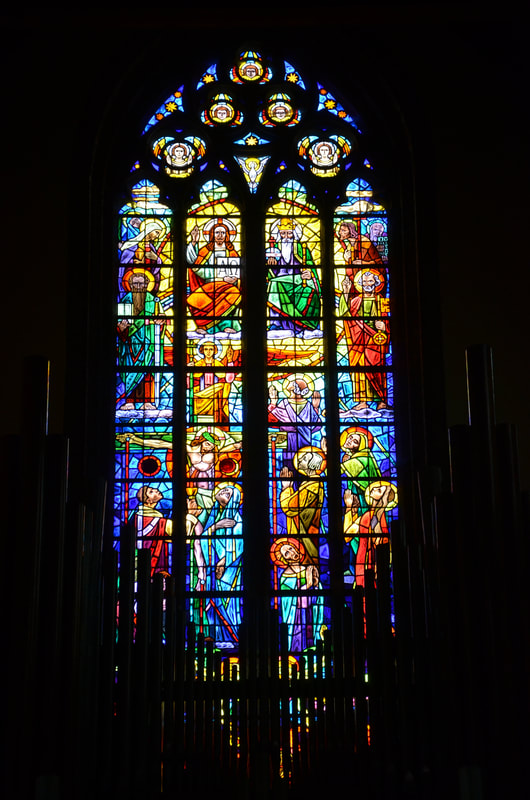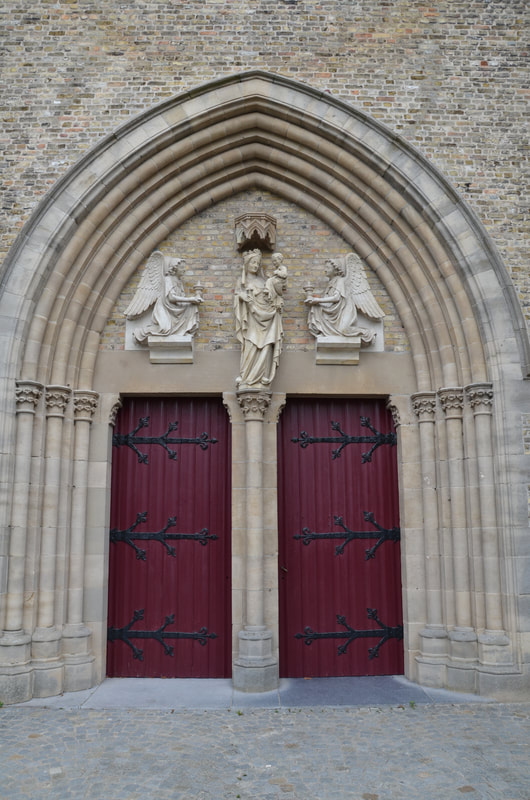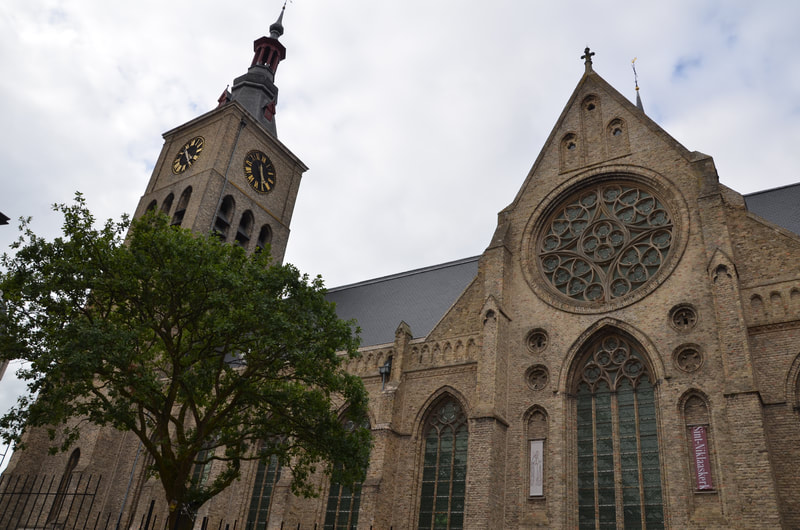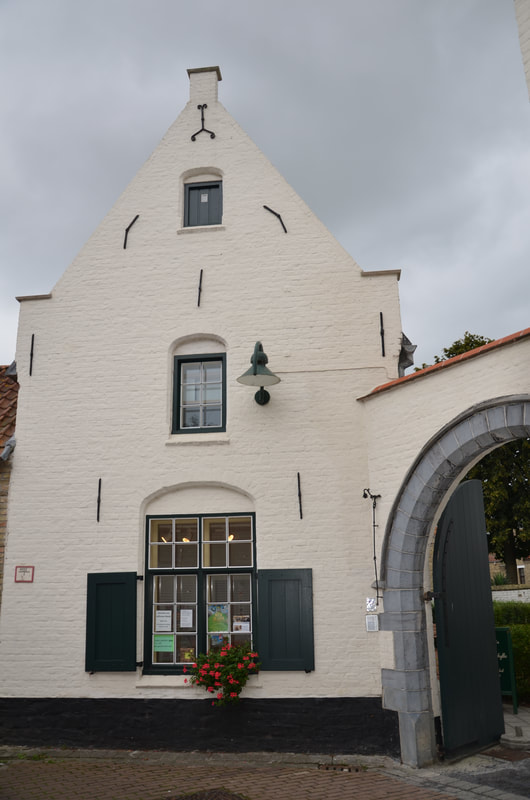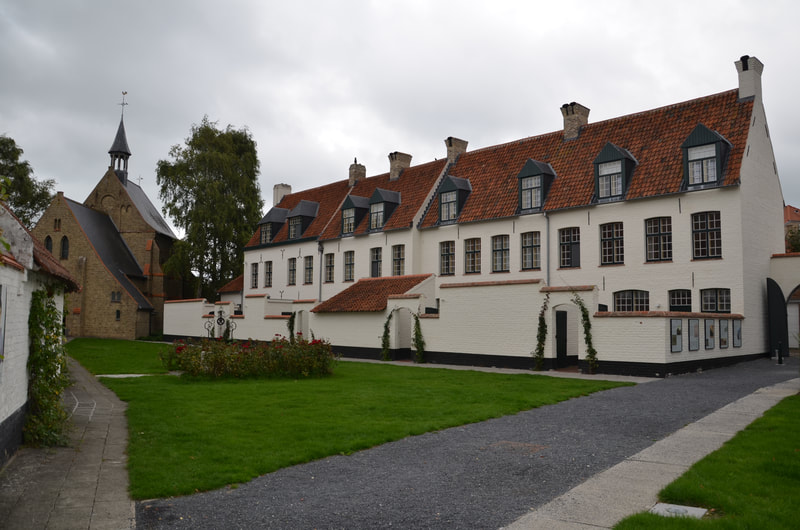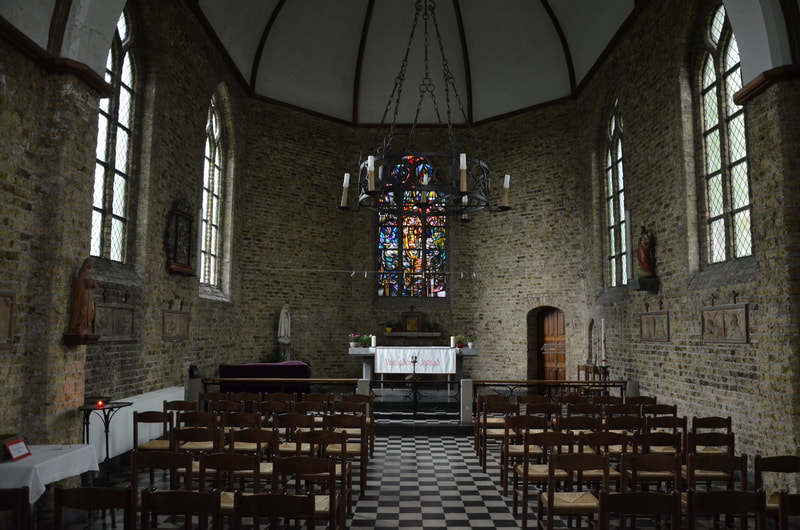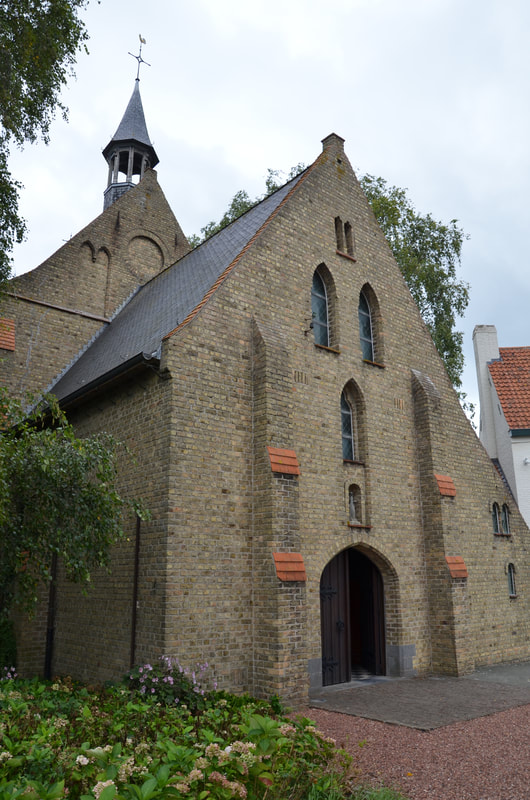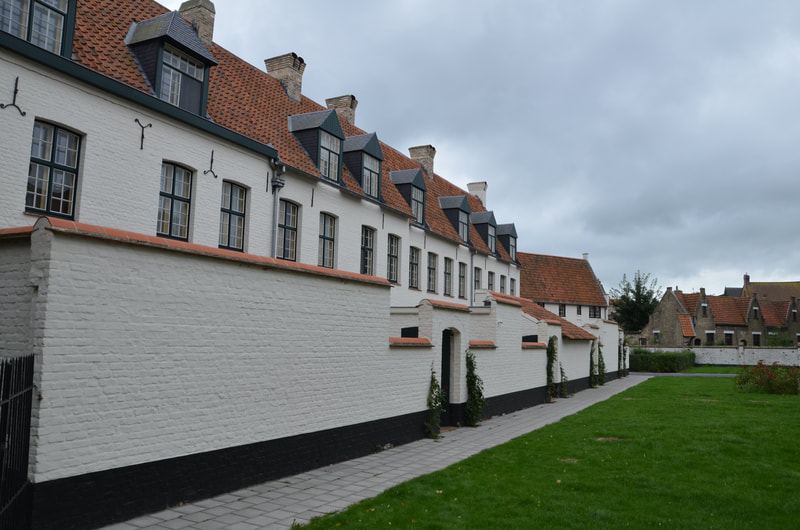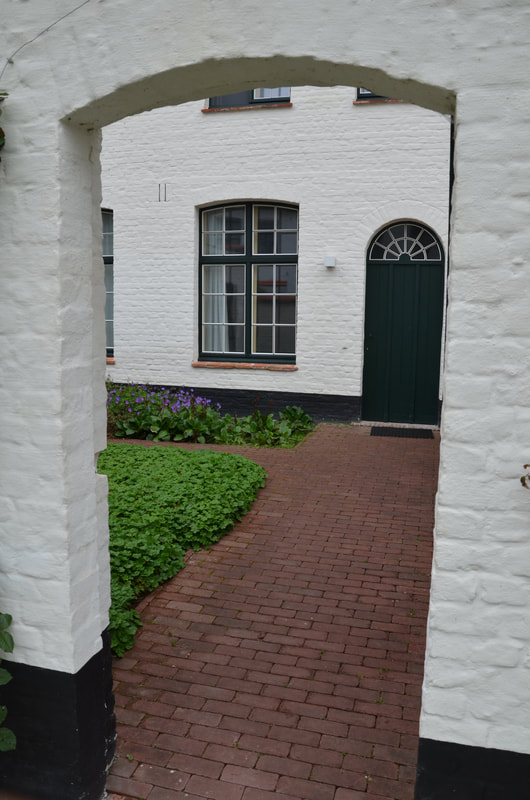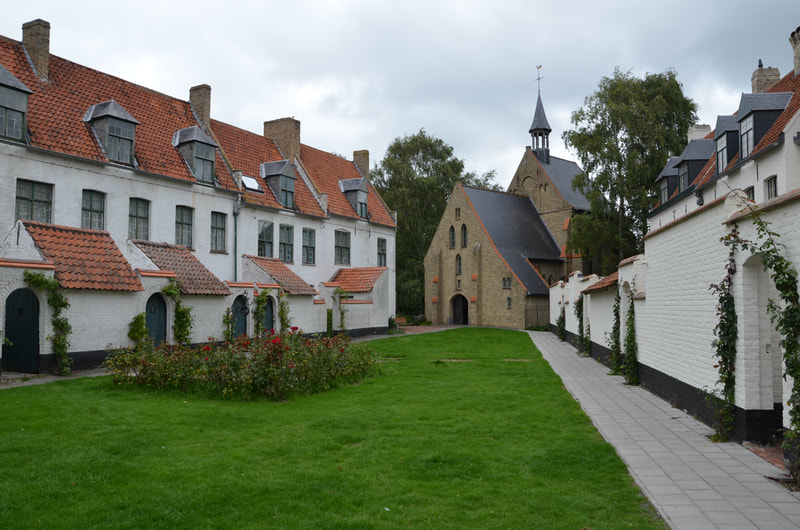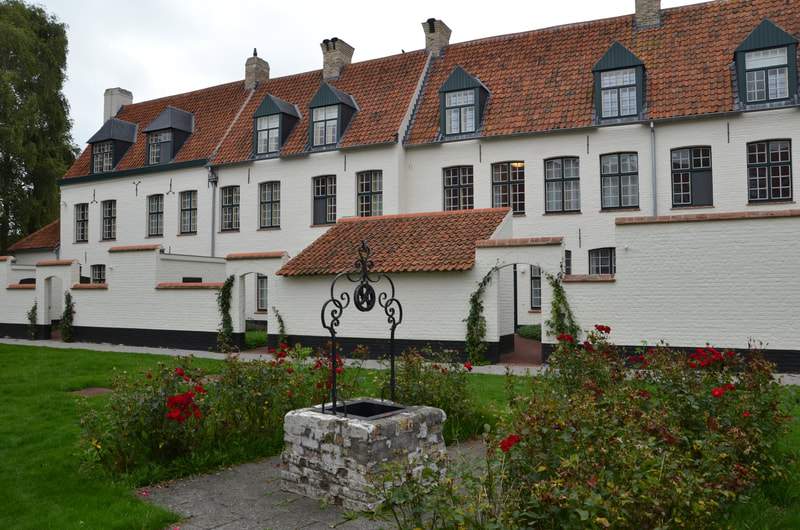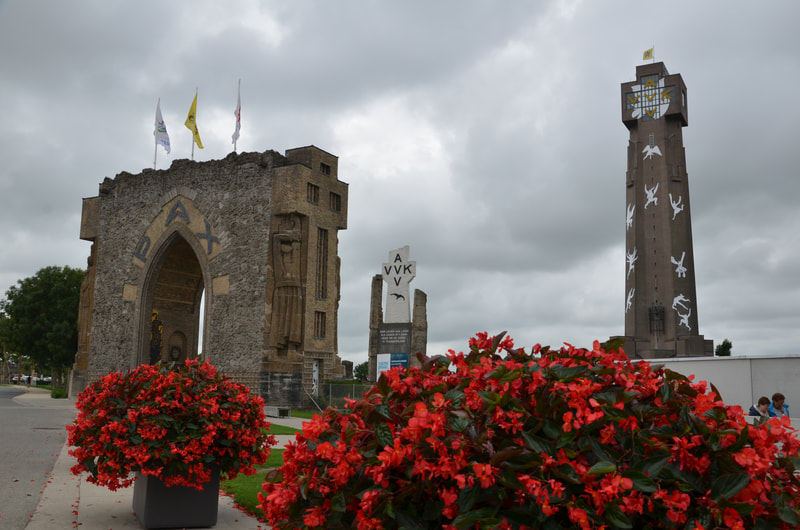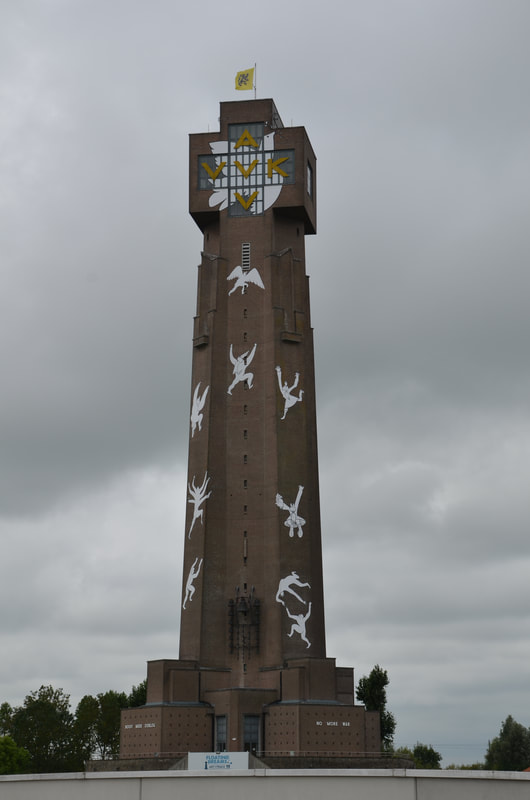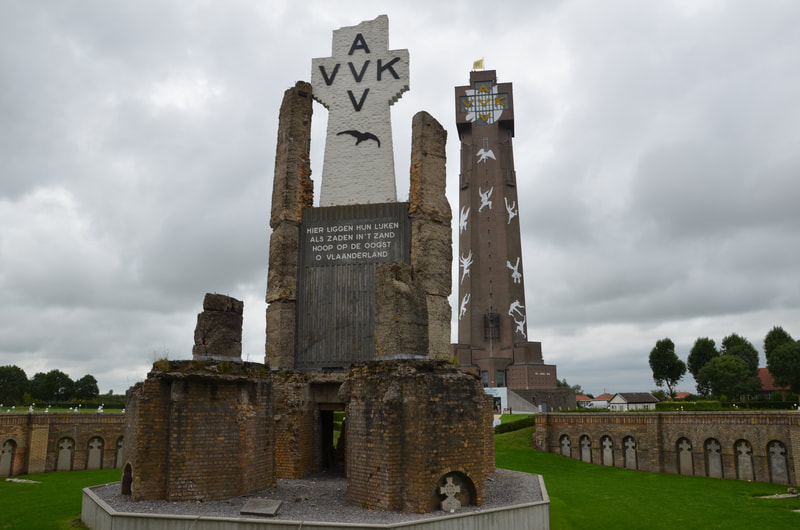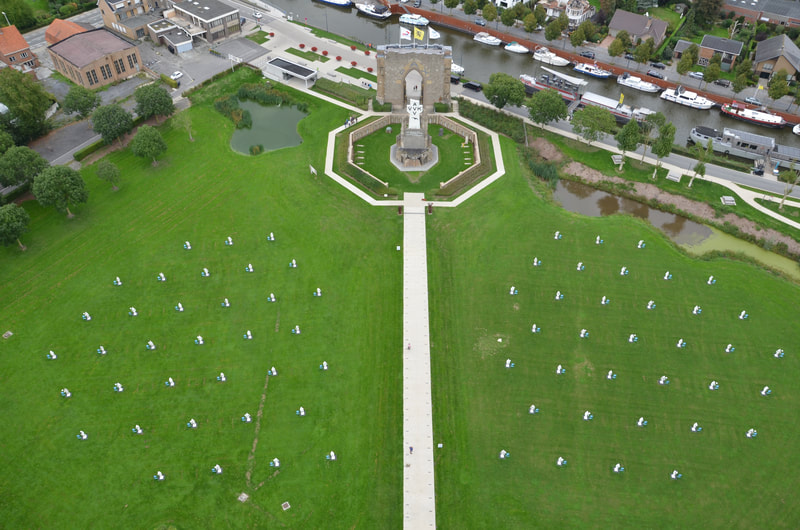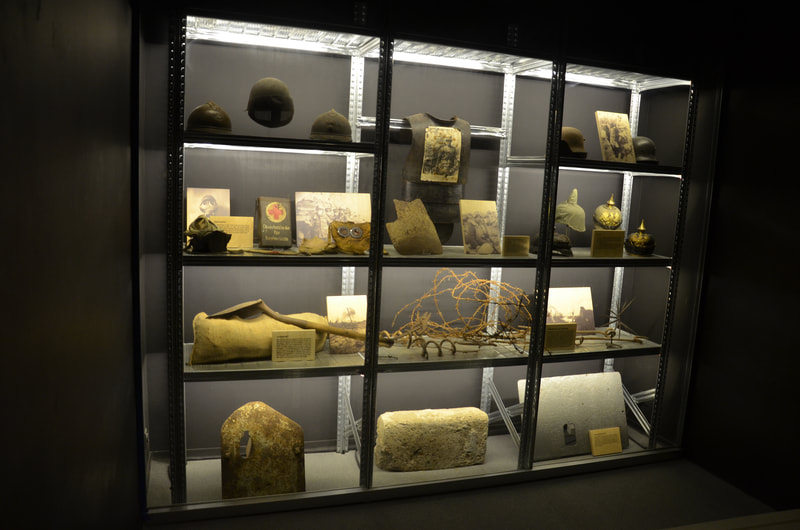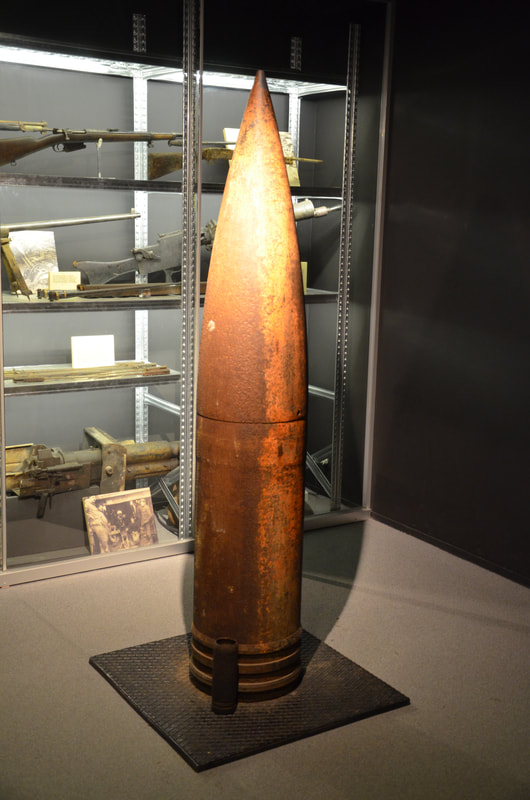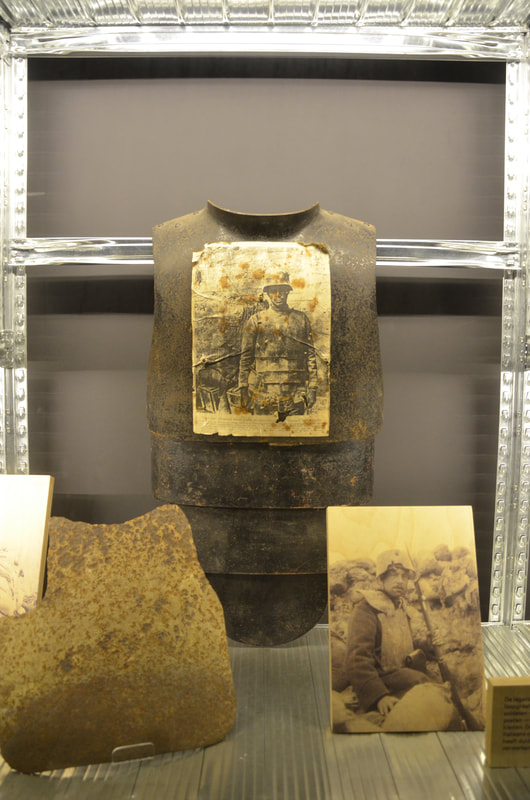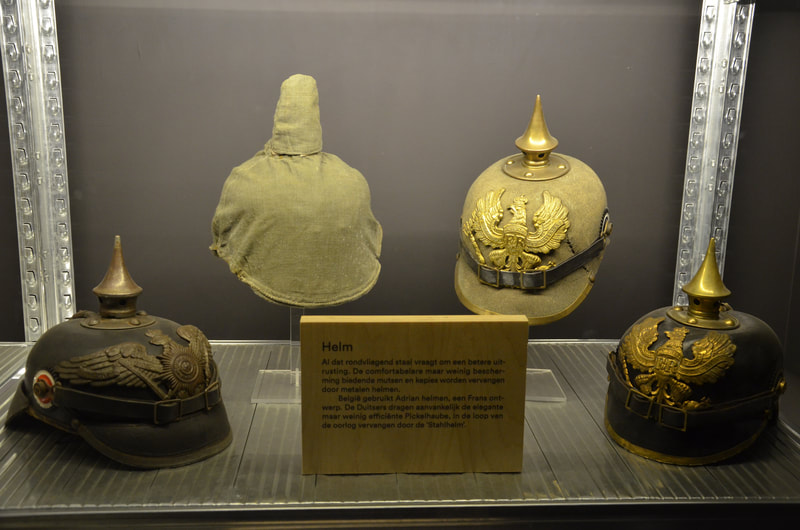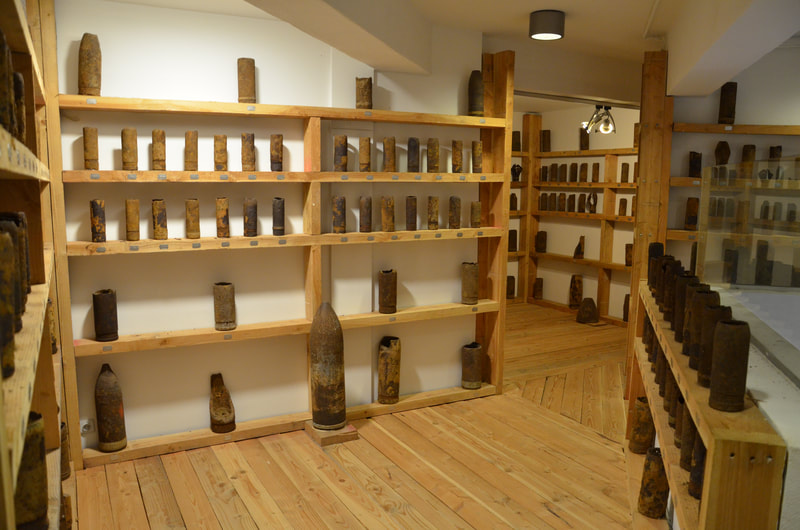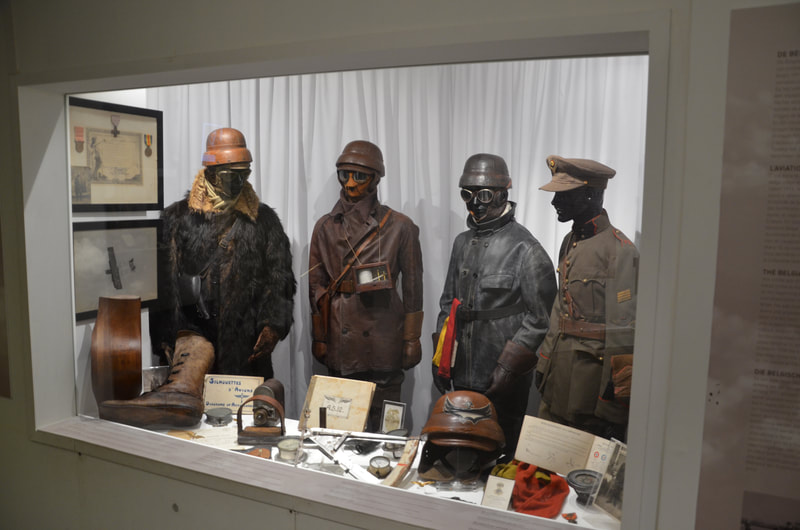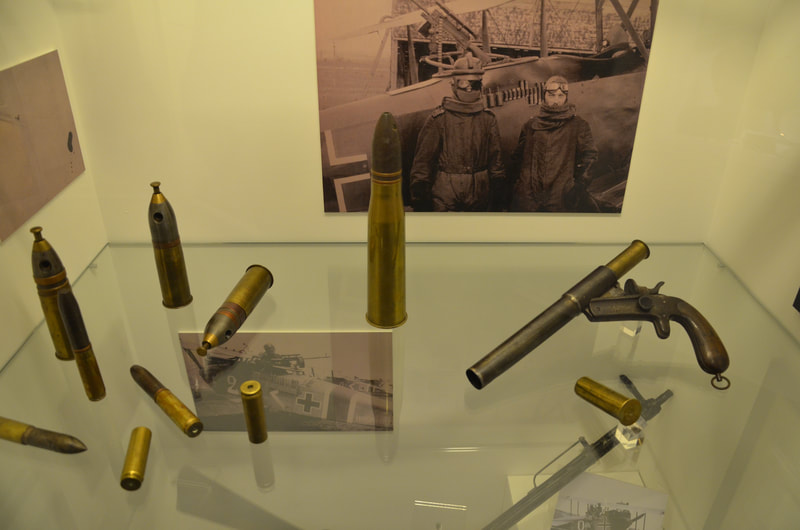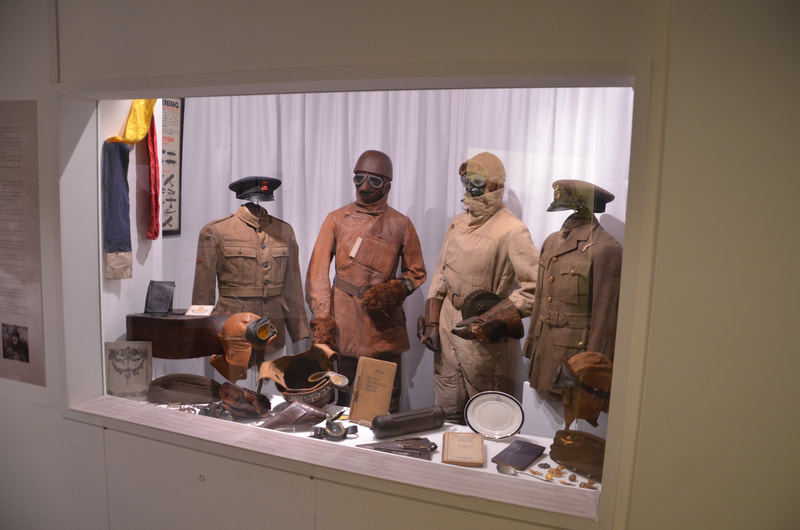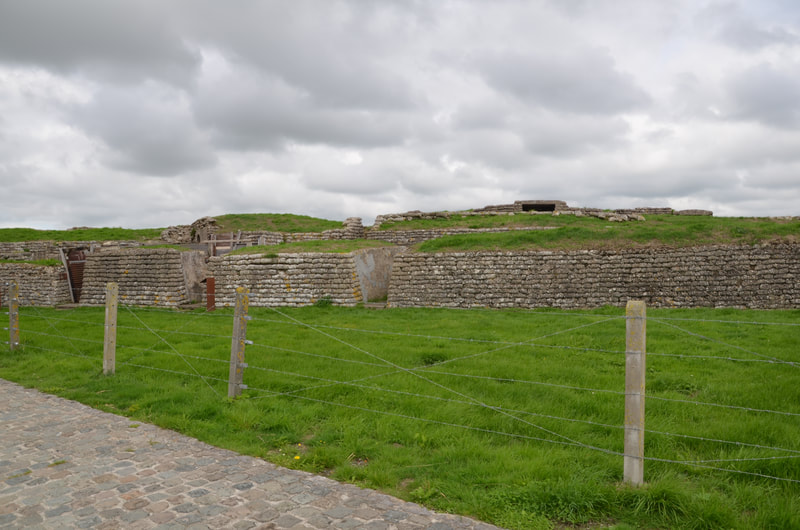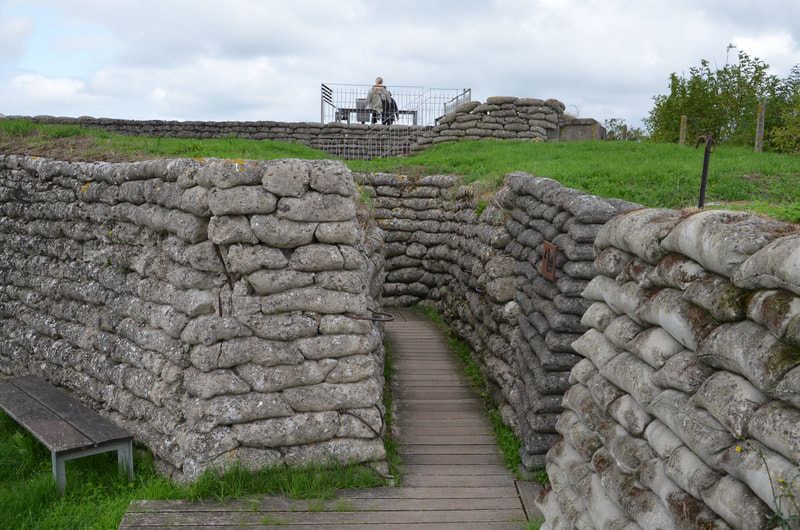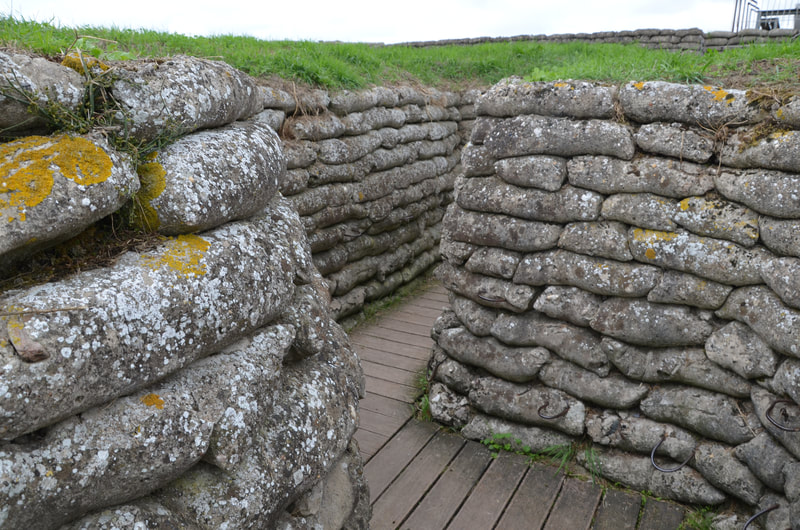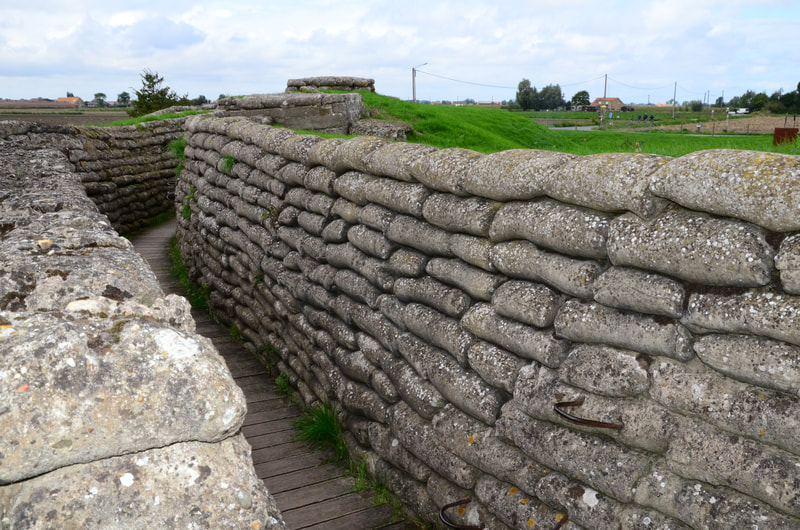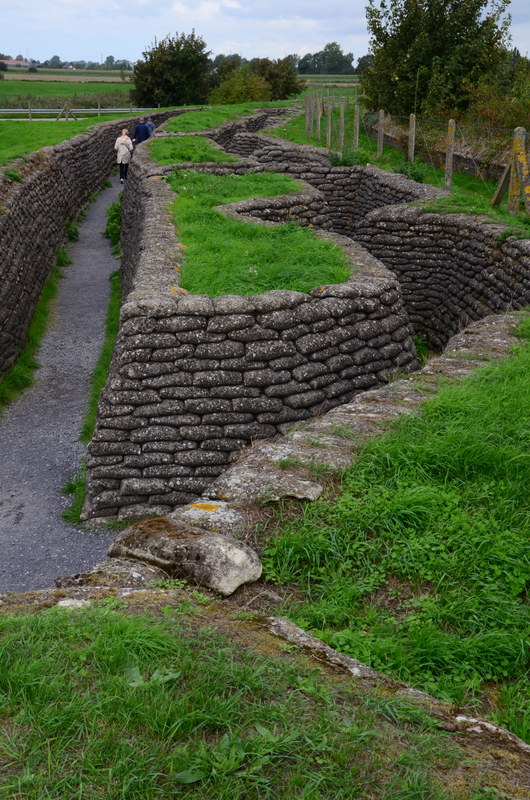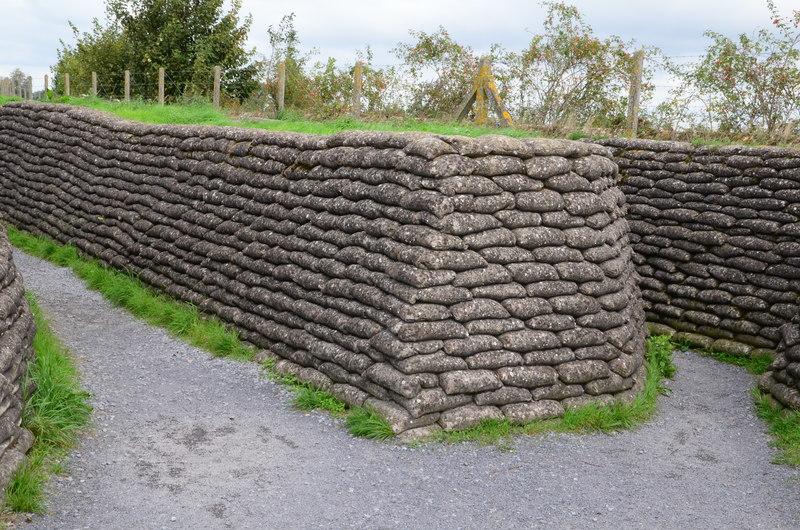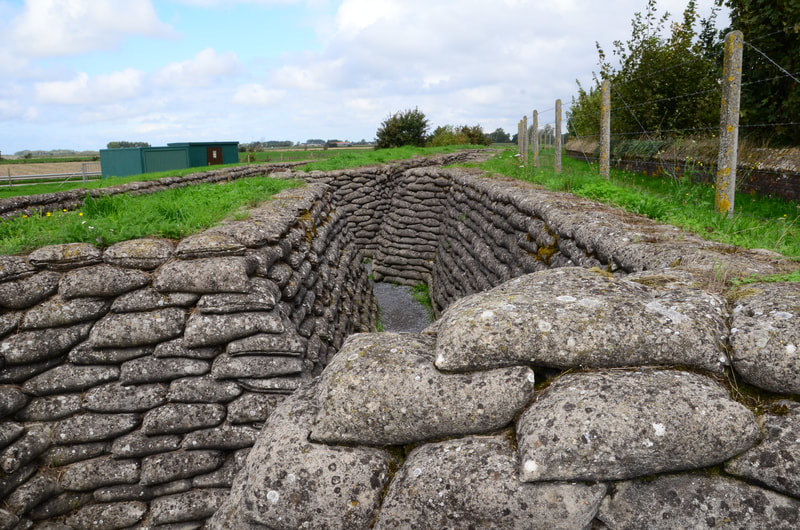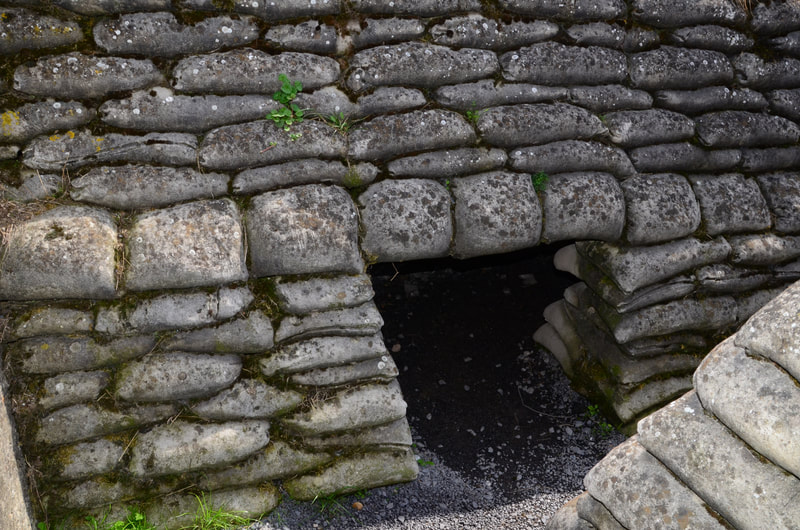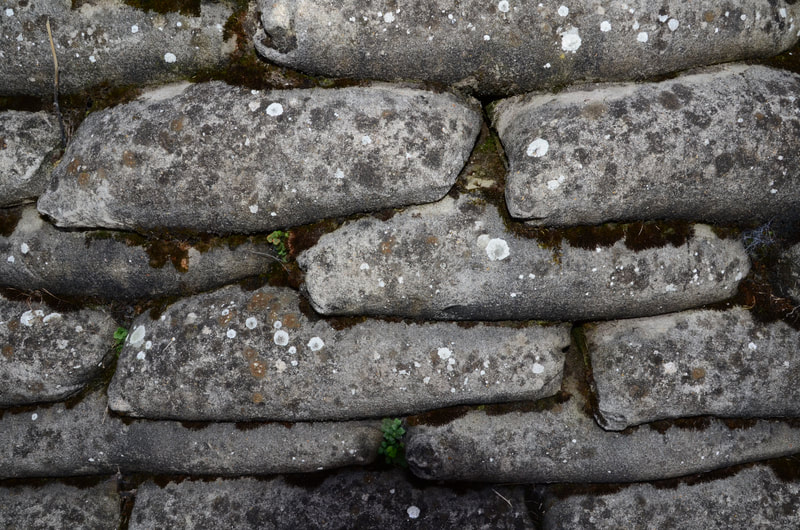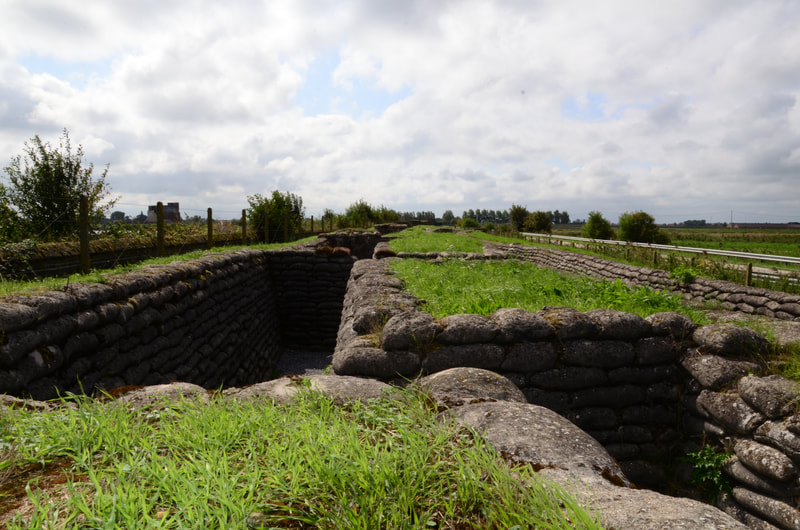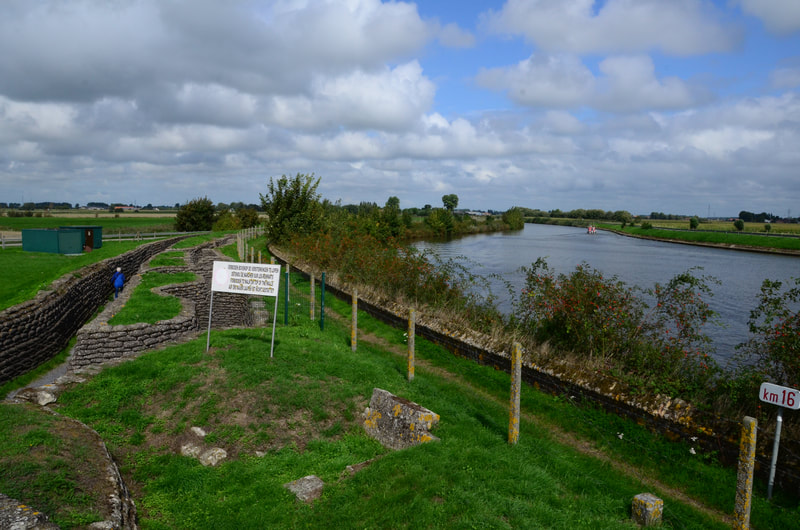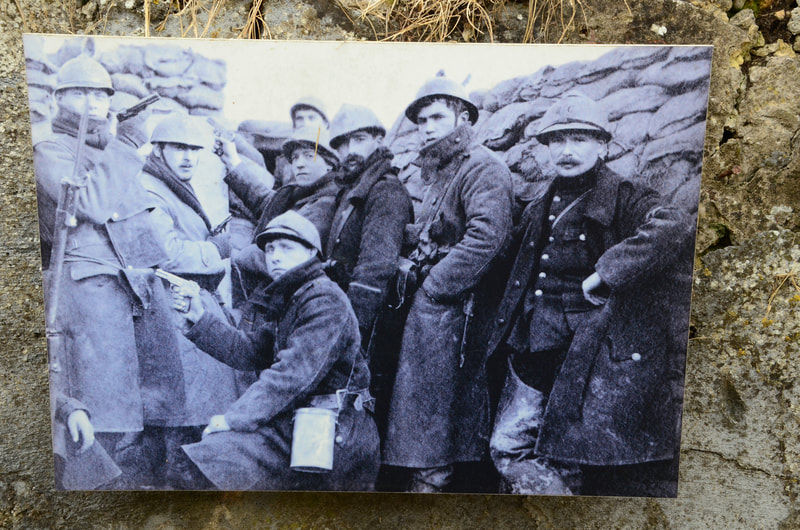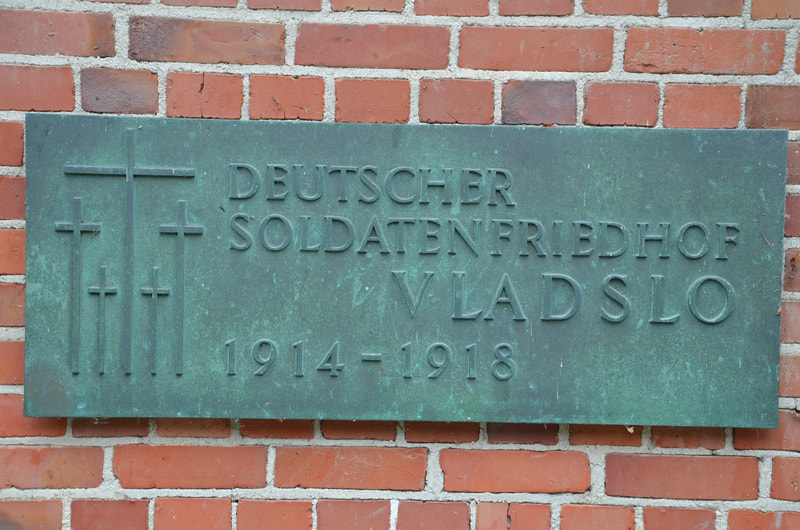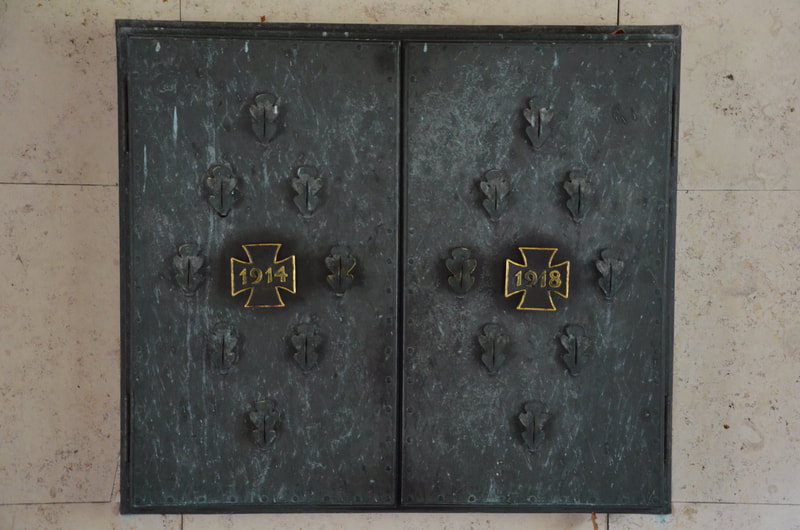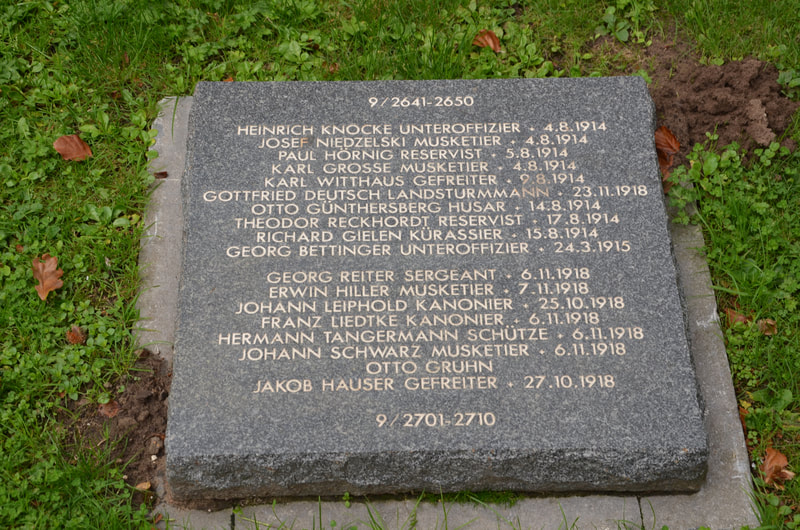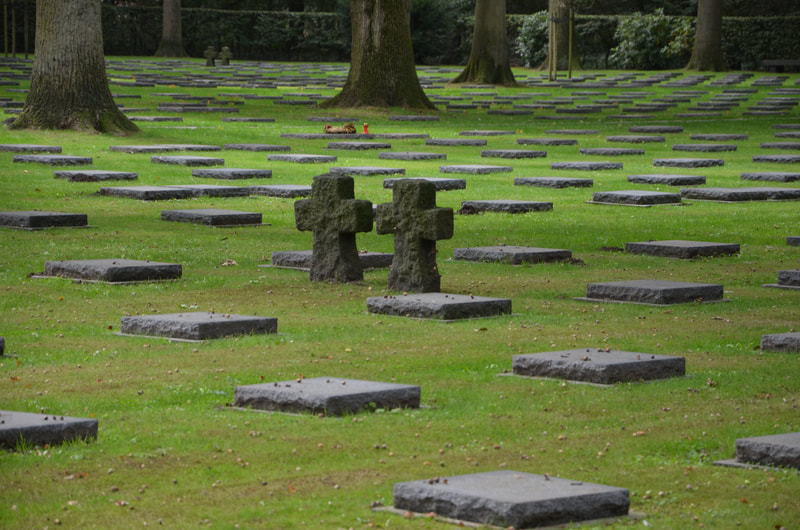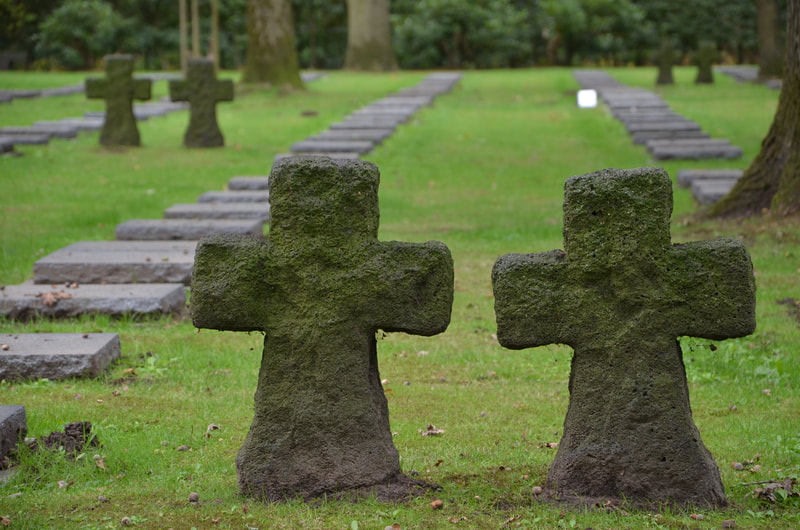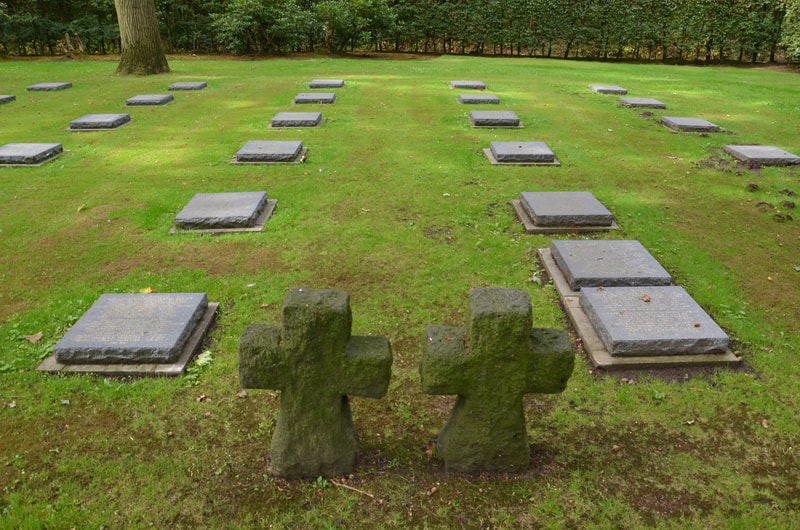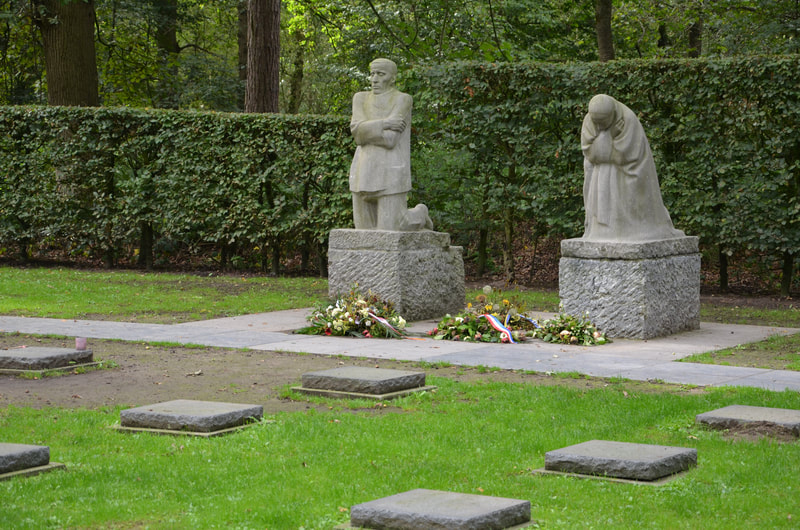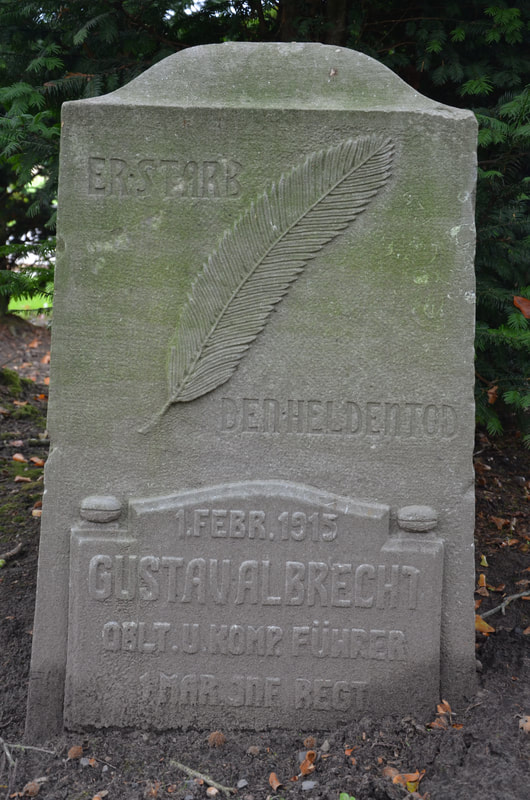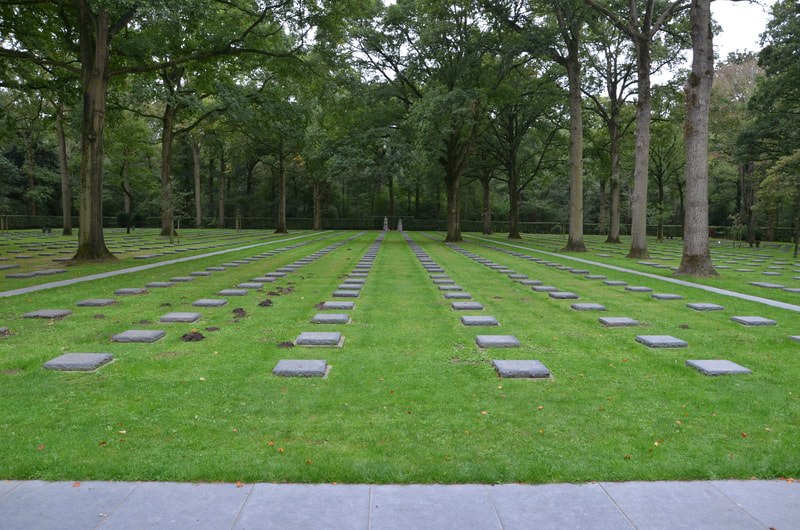Diksmuide |
vertical divider
is a small town located in the province of West Flanders. Its origins date back to the ninth century, when, near the Yser river, the Frankish settlement of Dicasmuth was founded, which in the twelfth century received city rights. Over the centuries Diksmuide has suffered repeatedly due to wars. Starting from the 15th century wars between the Netherlands, France, Spain and Austria, to the hecatomb of World War I.
16 Octoberdziernika 1918 roku rozpoczęły się walki z wojskami niemieckimi. W wyniku wyniszczających ataków i bombardowań Diksmuide spotkał taki sam los jak Ieper, z miasta pozostały jedynie zgliszcza. W roku 1920 rozpoczęła się żmudna odbudowa i próba przywrócenia miastu dawnego wyglądu.
Jak na niewielkie miasto znajdziemy tu kilka naprawdę ciekawych atrakcji, takich jak kościół św. Mikołaja, ratusz, niewielki beginaż, czy budynek dawnego targu rybnego. |
However, the greatest impression is made by places reminding about the nightmare of the First World War. Unusual museum of Ijzer, in which on 22 storeys were collected war exhibits, dark trenches of death, in which for several years lived and died Belgian soldiers and German war cemetery Vladslo.
Church of St. Nicholas
1089- Diksmuide staje się samodzielną parafią.
|
1144- powstaje kościół św. Mikołaja.
1333- romańska kaplica zostaje zniszczona w pożarze, w jej miejsce powstaje gotycki kościół halowy. 1566- zebrane w kościele skarby przetrwały ataki ikonoklastów. |
1668- ponowny pożar kościoła. Odbudowana wieża kościoła uzyskuje obecny kształt.
1919- odbudowa zniszczonego kościoła. 1940- po ciężkim bombardowaniu z kościoła św. Mikołaja pozostają tylko ściany. |
Obecny kościół to rekonstrukcja gotyckiej budowli z ozdobną wieżą z XVII wieku. Na przestrzeni wieków w kościele zgromadzono wiele wspaniałych dzieł sztuki, takich jak sakramentarium (1614), chrzcielnica (1626), stalle, czy będący częścią ołtarza głównego obraz, który namalował Jacob Jordaens (1644). Niestety skarby, którym udało się przetrwać czasy Ikonoklastów, zostały zniszczone podczas ciężkiego bombardowania w 1940 roku. Wspaniała chrzcielnica to kopia tej stworzonej, w 1626 roku przez Jana van der Carre, dla kościoła parafialnego w Diksmuide.
Beginaż
In the 13th century, secular residents were isolated from the rest of society to live an independent life. They founded their own Beguinage on the swampy northern edge of Diksmuide. There was a chapel, infirmary and several houses. The card from the 1697 year was a code of conduct and presented details of the life of the closed community of beguines. The assembly managed the so-called mistress. Just after arriving at the Beguinage, Beguines made vows of chastity and obedience.
The inhabitants of the Beguinage took care of the sick, taught religion, and made lace. After the First World War, the Beguinage was completely rebuilt, based on old plans. Unfortunately, beguines disappeared. Today, Beguinage is owned by the De Lovie organization and is inhabited by people with intellectual disabilities.
History of Diksmuide during the First World War
|
Ijzer museum |
vertical divider
The original tower was built in the year 1930 as a war memorial dedicated to the soldiers who died on the West-Flemish front during the First World War. For many years the tower was considered a symbol of Flemish nationalists. In 1946, it was blown up in unexplained circumstances.
|
W 1965 roku, po 13 latach, ukończono budowę nowego, wspaniałego monumentu. 84-metrowa wieża, będąca najwyższym pomnikiem pokoju w Europie, mieści ciekawe muzeum (Wojny, Pokoju, flamandzkiej emancypacji). Na 22 piętrach zgromadzono wiele wojennych eksponatów, takich jak broń czy mundury. Historyczne zdjęcia ukazują cierpienie żołnierzy i ludności cywilnej. Zwiedzanie muzeum rozpoczyna się od wjechania na szczyt budowli. Z jej tarasu rozciąga się wspaniały widok na cały region od Nieuwpoort do Passchendaele, Ypres, Poperinge i Ploegsteert.
Wieża usytuowana wzdłuż rzeki Yser w Diksmuide ozdobiona jest literami AVV-VVK (Wszytko dla Flandrii-Flandria dla Chrystusa), przed wejściem widnieje napis Nigdy więcej Wojny. Motto muzeum brzmi: Co pozostało z życia?. Co pozostało z Kraju?.
Wieża usytuowana wzdłuż rzeki Yser w Diksmuide ozdobiona jest literami AVV-VVK (Wszytko dla Flandrii-Flandria dla Chrystusa), przed wejściem widnieje napis Nigdy więcej Wojny. Motto muzeum brzmi: Co pozostało z życia?. Co pozostało z Kraju?.
|
Address:
IJzerdijk 49, 8600 Diksmuide |
Ticket price:
8 Euro |
Opening hours:
styczeń-luty-marzec-październik-listopad-grudzień: od 9.00 do 17.00
(sobota, niedziela i święta państwowe: od 10.00 do 17.00)
kwiecień-maj-czerwiec-lipiec-sierpień-wrzesień: od 9.00 do 18.00
(sobota, niedziela i święta państwowe: od 10.00 do 18.00)
Zamknięte w dniu 24/25/31/31 grudnia, 01/02 stycznia + 3 tygodnie po świętach Bożego Narodzenia.
Ostatnie wejście na godzinę przed zamknięciem.
styczeń-luty-marzec-październik-listopad-grudzień: od 9.00 do 17.00
(sobota, niedziela i święta państwowe: od 10.00 do 17.00)
kwiecień-maj-czerwiec-lipiec-sierpień-wrzesień: od 9.00 do 18.00
(sobota, niedziela i święta państwowe: od 10.00 do 18.00)
Zamknięte w dniu 24/25/31/31 grudnia, 01/02 stycznia + 3 tygodnie po świętach Bożego Narodzenia.
Ostatnie wejście na godzinę przed zamknięciem.
1914-1918 OKOPY ŚMIERCI
To miejsce szczególne, przypominające o hekatombie I Wojny Światowej, która w sposób szczególny doświadczyła Diksmuide. Miasto, które znalazło się na linii frontu zostało, podobnie jak Ieper, niemal doszczętnie zniszczone przez wojska niemieckie.
Istniejące do dziś okopy śmierci usytuowane wzdłuż rzeki Ijzer, zaledwie 100 metrów od okopów wroga są ostatnią zachowaną częścią systemu umocnień z czasów I Wojny Światowej.
Dziś te kilkaset metrów umocnień przypomina o okropieństwach wojny, stwardniałe na kamień stuletnie worki z piaskiem, zabezpieczające wąskie okopy, wyznaczały miejsce, w którym przez cztery lata żyli i ginęli belgijscy żołnierze.
Istniejące do dziś okopy śmierci usytuowane wzdłuż rzeki Ijzer, zaledwie 100 metrów od okopów wroga są ostatnią zachowaną częścią systemu umocnień z czasów I Wojny Światowej.
Dziś te kilkaset metrów umocnień przypomina o okropieństwach wojny, stwardniałe na kamień stuletnie worki z piaskiem, zabezpieczające wąskie okopy, wyznaczały miejsce, w którym przez cztery lata żyli i ginęli belgijscy żołnierze.
|
Address:
Dodengang, Ijzerdijk 65 Ticket price: 4 Euro
|
Opening hours:
1 kwietnia-15 listopada 10.00-18.00 16 listopada-31 marca, wtorki i czwartki 9.30-16.00 Ostatnie wejście na pół godziny przed zamknięciem |
|
Niemiecki cmentarz
wojenny Vladslo |
vertical divider
located about three kilometers from the village of Vladslo, near Diksmuide in Belgium, is the resting place of German soldiers who died in the First World War.
|
"Groby żołnierzy są najwspanialszymi kaznodziejami pokoju"
Albert Schweitzer laureat Pokojowej Nagrody Nobla
Albert Schweitzer laureat Pokojowej Nagrody Nobla
At the end of the First World War in Belgium there were 678 German military cemeteries, on which 134 thousands of fallen German soldiers were buried. In the 1925 year, the number of cemeteries was reduced to 128 so that ultimately, under an international agreement, four cemeteries could be created in cities: Hooglede (8246 fallen soldiers), Langemark (44.249 killed, including 25 thousands in a mass grave) , Menen (47.864 fallen) and Vladslo (25.645 buried).
The cemetery Vladslo, like other German cemeteries, clearly contrasts with English and American cemeteries. There is no pride in heroes, lofty slogans, you can see that it is a cemetery of the defeated. Dark stone slabs with engraved names, surnames, military ranks and dates of death of twenty soldiers on each one.
In addition, the gloomy mood is compounded by the sculpture of the Grieving Parents created by Käthe Kollwitz, the famous German sculptor, whose youngest son Peter was killed near Diksmuide 23 October 1914 of the year. This sculpture symbolizes the pain and suffering of all parents who lost their children in the war. In one of the graves opposite the monument, Peter Kollwitz was buried.
Near the cemetery is the Käthe Kollwitz museum, telling the story of her son Peter, a young soldier who died a few days after arriving in Diksmuide. There is also a story about Käthe, the famous German sculptor, her suffering after the death of her beloved son, pacifism, which manifested in her works created in Germany in the 1930s and 1940s. In the year 1942 Käthe's grandson, Peter was killed on the Russian front, she herself died on 22 April 1945 year, not seeing the end of the war she hated so much.
In addition, the gloomy mood is compounded by the sculpture of the Grieving Parents created by Käthe Kollwitz, the famous German sculptor, whose youngest son Peter was killed near Diksmuide 23 October 1914 of the year. This sculpture symbolizes the pain and suffering of all parents who lost their children in the war. In one of the graves opposite the monument, Peter Kollwitz was buried.
Near the cemetery is the Käthe Kollwitz museum, telling the story of her son Peter, a young soldier who died a few days after arriving in Diksmuide. There is also a story about Käthe, the famous German sculptor, her suffering after the death of her beloved son, pacifism, which manifested in her works created in Germany in the 1930s and 1940s. In the year 1942 Käthe's grandson, Peter was killed on the Russian front, she herself died on 22 April 1945 year, not seeing the end of the war she hated so much.
